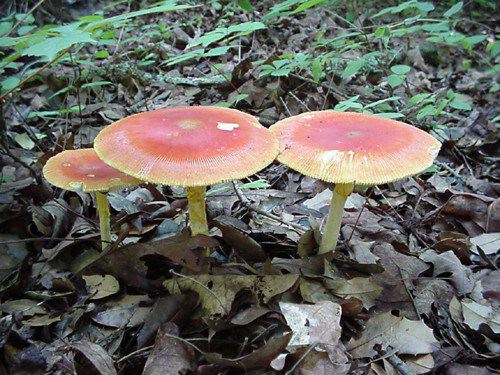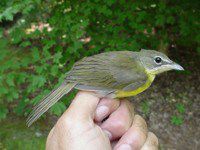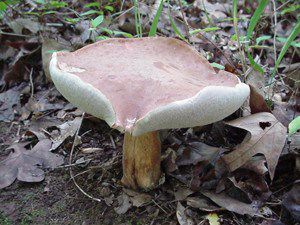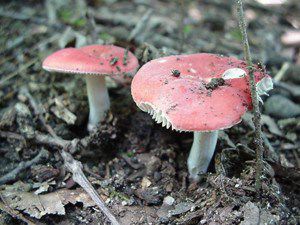|
|
|||
|
THIS WEEK at HILTON POND Installment #---Visitor # (Back to Preceding Week; on to Next Week) |
 All photos © Hilton Pond Center Much of South Carolina saw little or no rain for the month of July, but as August arrived, so did some much-needed precipitation. Successive days of .25", 1", 1.4", and .15" of rain didn't exactly break the drought, but it certainly helped. Herbaceous vegetation responded almost immediately to the moisture; grass that hadn't grown in a month suddenly sprouted a foot or more, and the incessant drone of lawnmowers was heard again as suburban landowners renewed their covenant with the Lord of the Lawn. Although grasses grew rapidly after the rain, their growth rate couldn't compare with that of the local fungi, many of which had been "hiding" as vegetative forms just beneath the surface of the soil. For many fungi new moisture signaled their subterranean root-like structures that it was time to reproduce, and what came out of the soil was literally hundreds of mushrooms of diverse shapes and colors. The most visible part of a fungus is the mushroom, but each fungus also has an underground "mycelium" that carries out the everyday business of breaking down organic matter in the soil. As such, many fungi are "saprophytic"--which literally means "feeding on dead stuff"--but others are "parasitic" and attack living organisms.
|
   Yellow-breasted Chat (This recent fledgling exhibits the large beak typical of the species but has not yet developed its black mask.) |
|
|
Plus the following species not pictured Ruby-throated Hummingbird* *including at least one recent fledgling |
|

 Mushrooms--sometimes called toadstools--have several main parts, including the underground mycelium, a vertical stem called the "stipe," and the "cap," a more-or-less umbrella-like structure on which the reproductive spores are found. Aside from these similarities, mushrooms are highly variable in appearance; some have fat stipes and thick, flat caps (above right), while others may have parts that are delicate and translucent.
Mushrooms--sometimes called toadstools--have several main parts, including the underground mycelium, a vertical stem called the "stipe," and the "cap," a more-or-less umbrella-like structure on which the reproductive spores are found. Aside from these similarities, mushrooms are highly variable in appearance; some have fat stipes and thick, flat caps (above right), while others may have parts that are delicate and translucent. In the Piedmont, mushrooms can be found almost throughout the year, but they reach their peak in late summer, especially after a series of rainy days. They do sprout almost overnight, and it's possible to watch some species grow, unfurl their caps, spread their spores, and die with just a few days. Some mushrooms, however, never make it to maturity or get to disperse their spores. Instead they fall victim to the discriminating tastes of all sorts of wild animals, from chipmunks to box turtles to beetles--all of which seem to find the fleshy cap and stipe of a mushroom to be delicacies beyond compare. That's why, if you wander the woods and find a mushroom that looks as if something took a bite out of its cap (above right), then something probably did!
In the Piedmont, mushrooms can be found almost throughout the year, but they reach their peak in late summer, especially after a series of rainy days. They do sprout almost overnight, and it's possible to watch some species grow, unfurl their caps, spread their spores, and die with just a few days. Some mushrooms, however, never make it to maturity or get to disperse their spores. Instead they fall victim to the discriminating tastes of all sorts of wild animals, from chipmunks to box turtles to beetles--all of which seem to find the fleshy cap and stipe of a mushroom to be delicacies beyond compare. That's why, if you wander the woods and find a mushroom that looks as if something took a bite out of its cap (above right), then something probably did!